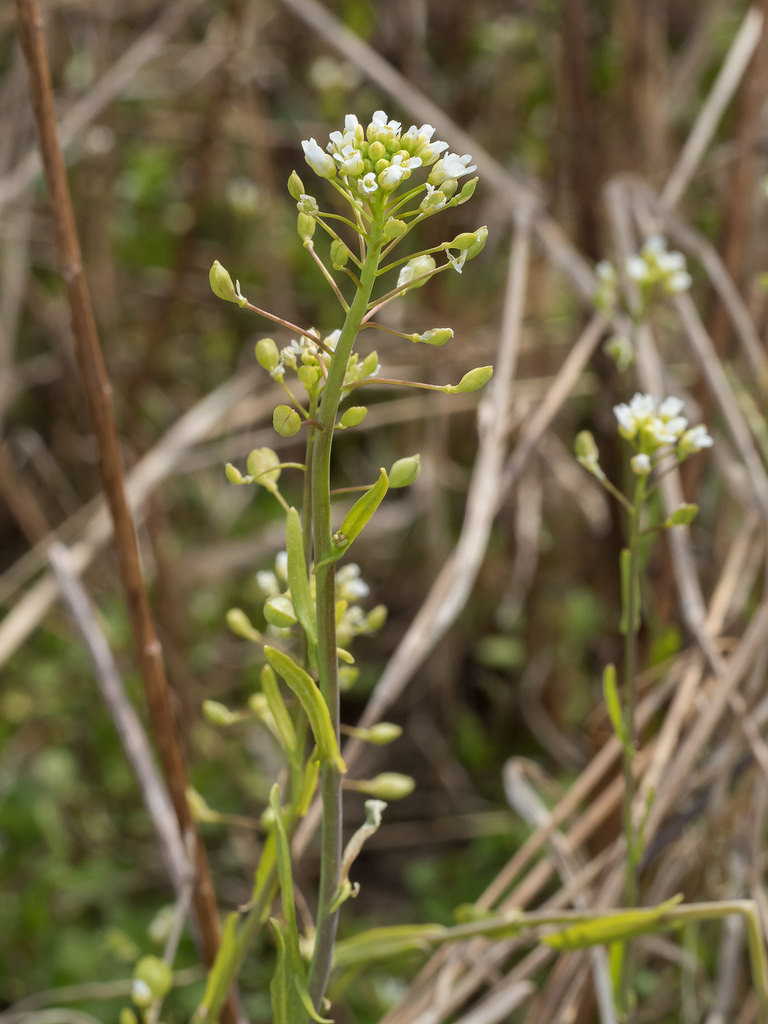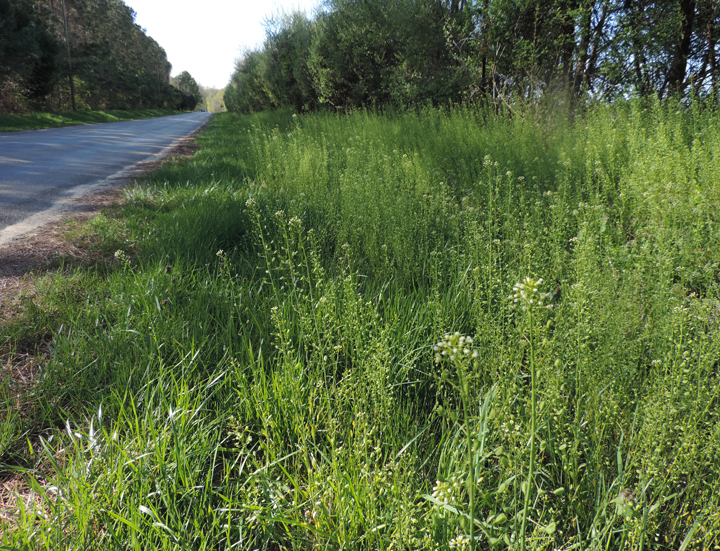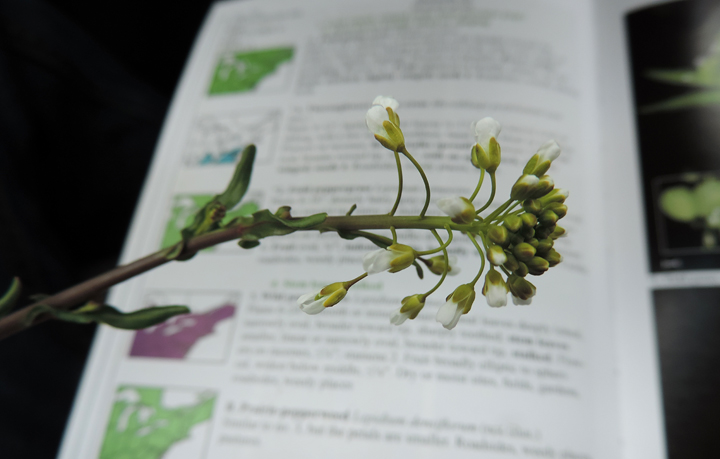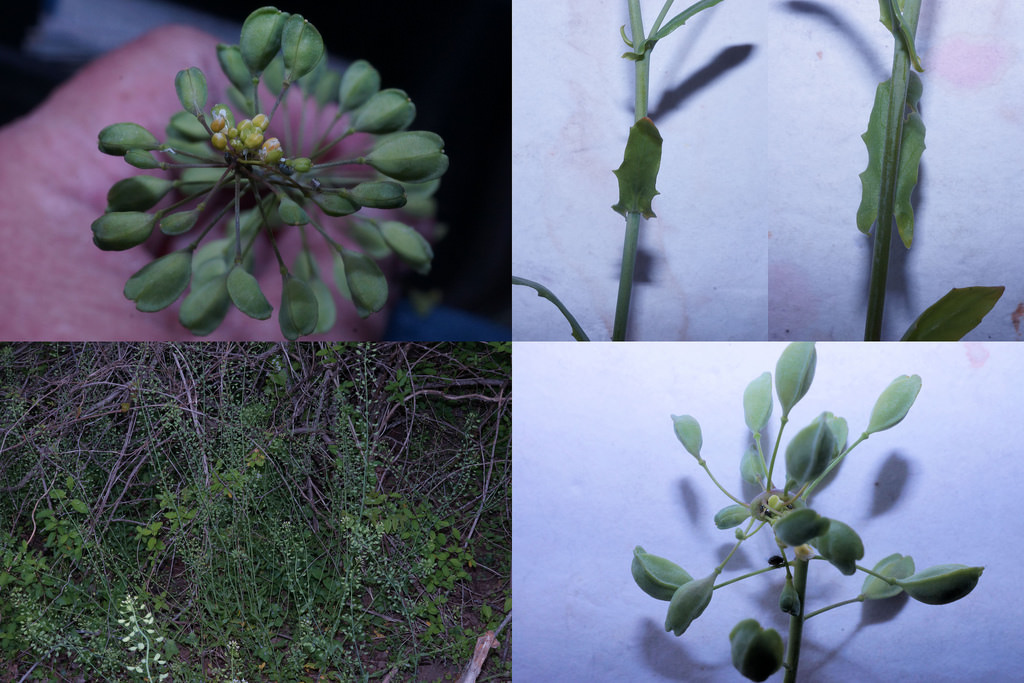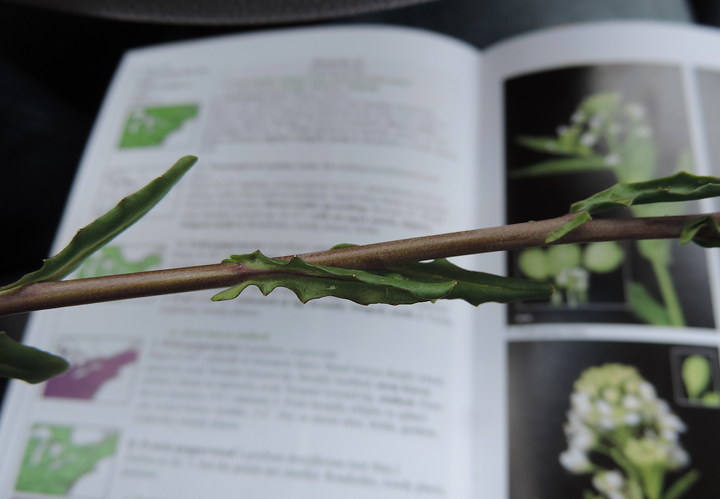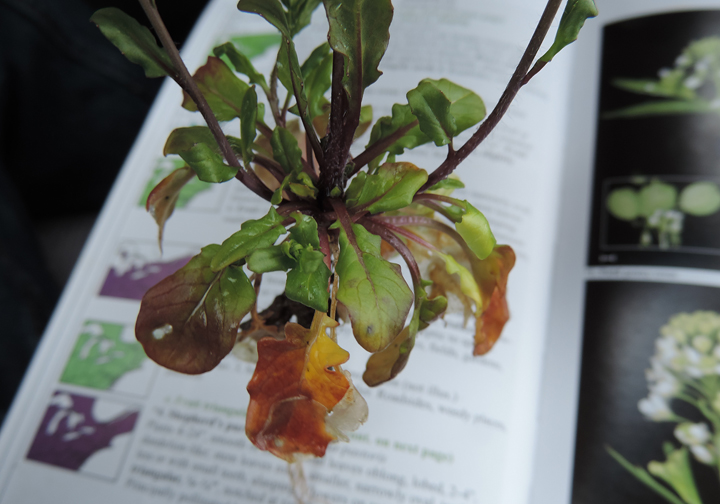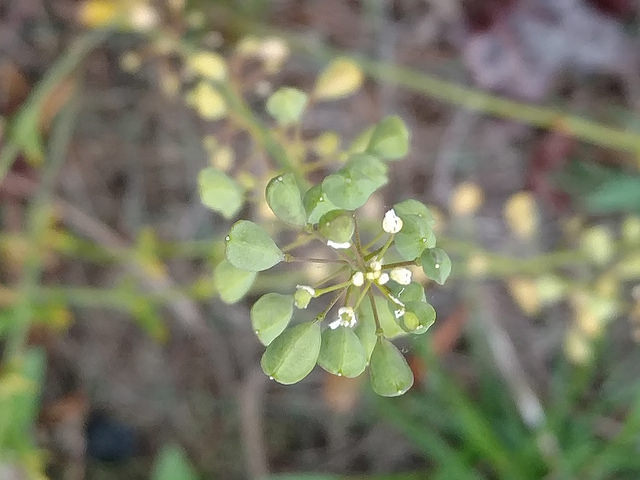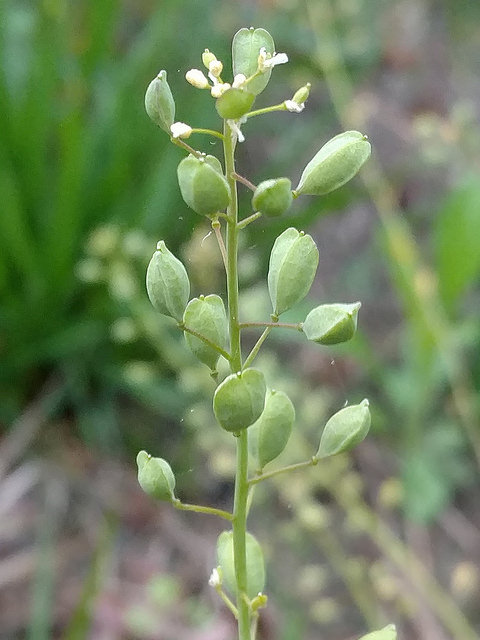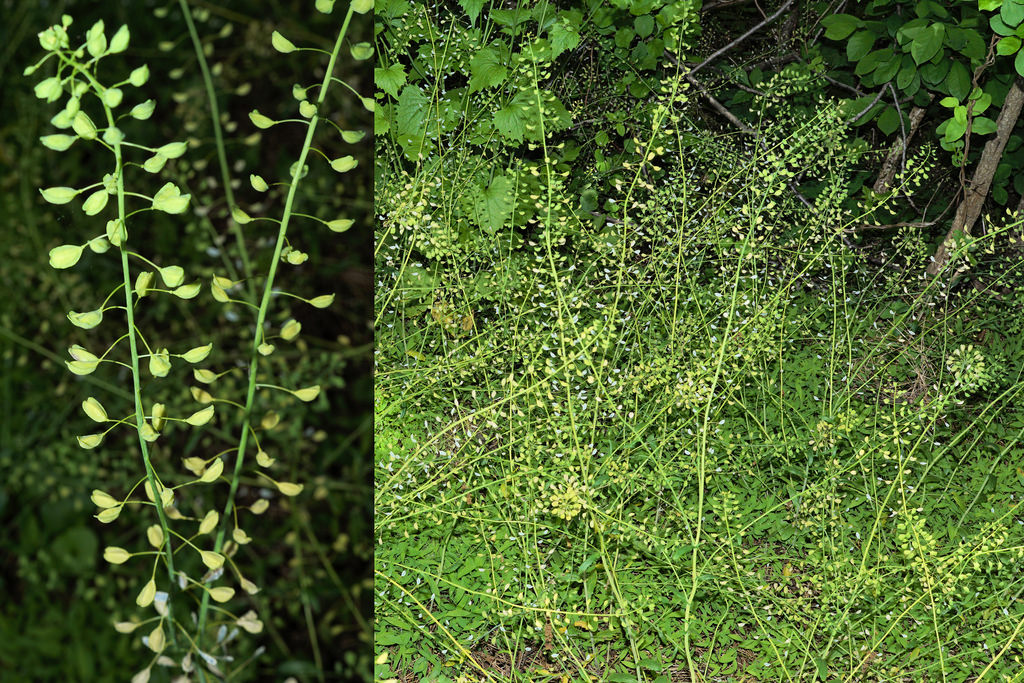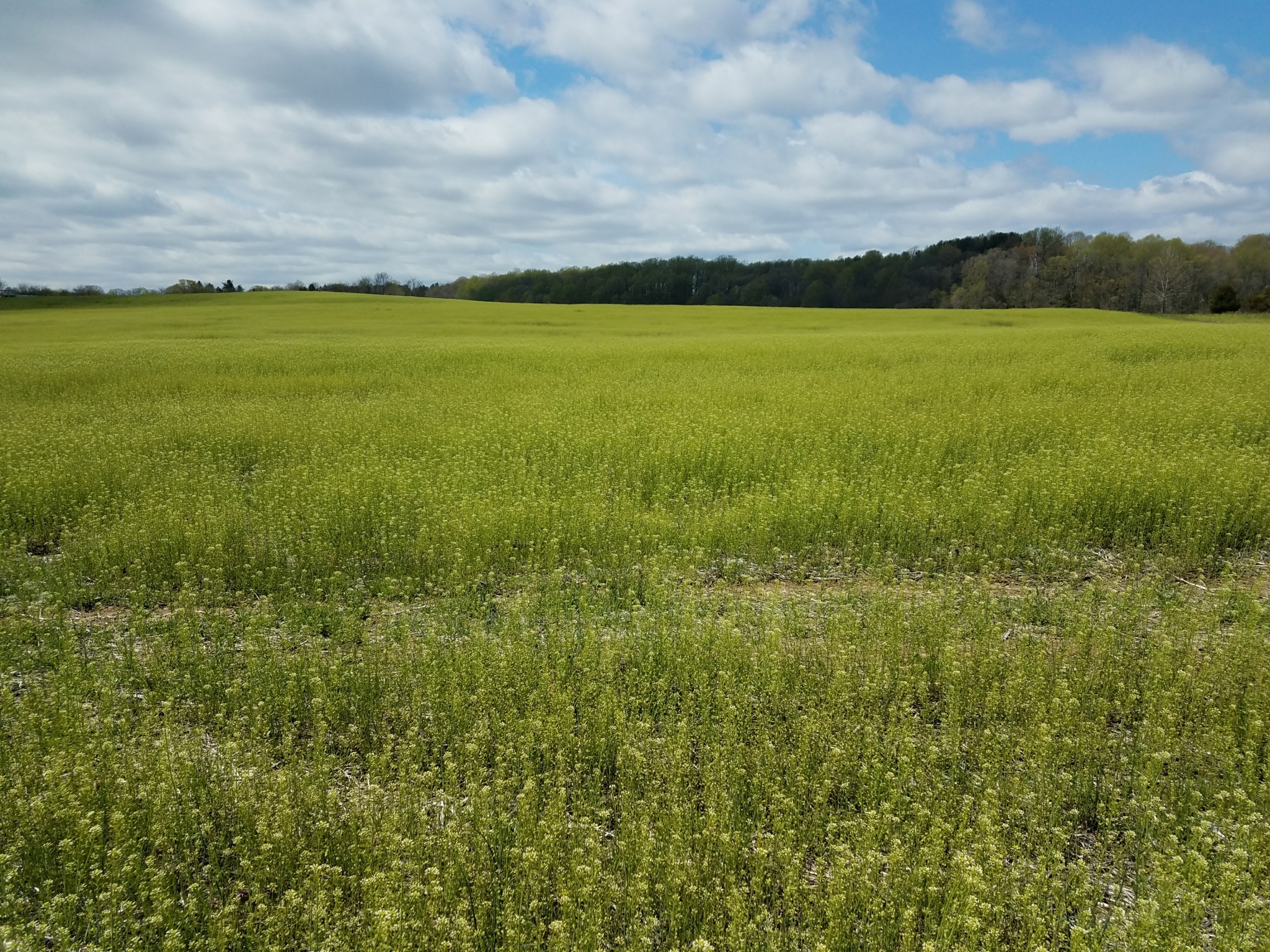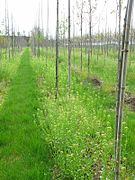Map Snapshot
























359 Records
Status
This non-native mustard was introduced from Eurasia and is rapidly expanding in the eastern U.S.
Description
Similar to Field Pennycress. Erect stem is glabrous and glaucous with some pilose hairs near base. Stem leaves are alternate, sessile, and clasping. Note strong garlic odor when crushed.
Seasonality Snapshot
Use of media featured on Maryland Biodiversity Project is only permitted with express permission of the photographer.
Roadside Pennycress in Kent Co., Maryland (4/27/2014).
View Record Details
Media by
Bill Hubick.
Roadside Pennycress in Frederick Co., Maryland (4/20/2014).
View Record Details
Media by
Bill Hubick.
Roadside Pennycress blooming in Worcester Co., Maryland (3/25/2017).
View Record Details
Media by
Ashley Bradford.
A homogeneous stand of Roadside Pennycress in Kent Co., Maryland (4/27/2014).
View Record Details
Media by
Bill Hubick.
Roadside Pennycress blooming in Howard Co., Maryland (4/7/2014).
View Record Details
Media by
Bill Hubick.
Roadside Pennycress in Howard Co., Maryland (4/19/2017).
View Record Details
Media by
Bill Harms.
Roadside Pennycress (stem) in Howard Co., Maryland (4/7/2014).
View Record Details
Media by
Bill Hubick.
Roadside Pennycress (basal leaves) in Howard Co., Maryland (4/7/2014). Note pilose hairs at base of stem. Plant had strong garlic odor when handled.
View Record Details
Media by
Bill Hubick.
Roadside Pennycress in Howard Co., Maryland (5/17/2020). (c) Wayne Longbottom, some rights reserved (CC BY-NC).
View Record Details
Media by
Wayne Longbottom.
Roadside Pennycress in Queen Anne's Co., Maryland (4/24/2017).
View Record Details
Media by
Wayne Longbottom.
Roadside Pennycress in Queen Anne's Co., Maryland (4/24/2017).
View Record Details
Media by
Wayne Longbottom.
Roadside Pennycress in Howard Co., Maryland (5/10/2017).
View Record Details
Media by
Bill Harms.
Roadside Pennycress in Harford Co., Maryland (4/24/2018).
View Record Details
Media by
Kirsten Johnson.
Roadside Pennycress in Baltimore Co., Maryland (4/29/2018). (c) Charlie Davis, some rights reserved (CC BY-NC).
View Record Details
Media by
Charlie Davis.
Roadside Pennycress in Harford Co., Maryland (4/29/2019). (c) susanrich01, some rights reserved (CC BY-NC).
View Record Details
Media by
susanrich01 via iNaturalist.
Source: Wikipedia
| Mummenhoffia alliacea | |
|---|---|

| |
| Raceme | |
| Botanical illustration | |
| Scientific classification | |
| Kingdom: | Plantae |
| Clade: | Tracheophytes |
| Clade: | Angiosperms |
| Clade: | Eudicots |
| Clade: | Rosids |
| Order: | Brassicales |
| Family: | Brassicaceae |
| Genus: | Mummenhoffia |
| Species: | M. alliacea
|
| Binomial name | |
| Mummenhoffia alliacea | |
| Synonyms[1] | |
| |
Mummenhoffia alliacea (syn. Thlaspi alliaceum), the garlic pennycress or roadside pennycress, is a species of flowering plant in the family Brassicaceae.[2] It is native to central and southern Europe, and Anatolia, and has been introduced to the United Kingdom and the eastern United States.[1] An erect plant usually 25 to 65 cm (10 to 26 in) tall, it is typically found on roadsides, fields, and other disturbed situations.[2]
References
[edit]- ^ a b "Mummenhoffia alliacea (L.) Esmailbegi & Al-Shehbaz". Plants of the World Online. Royal Botanic Gardens, Kew. Retrieved 12 January 2024.
- ^ a b Al-Shehbaz, Ihsan A. (5 November 2020). "Thlaspi alliaceum Linnaeus Sp. Pl. 2: 646. 1753". Flora of North America. Flora of North America Association. Retrieved 12 January 2024.


